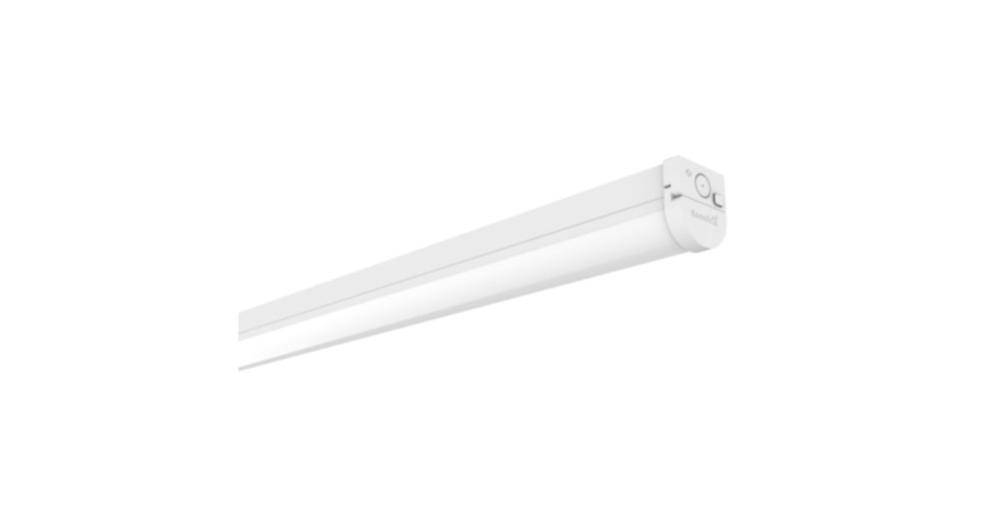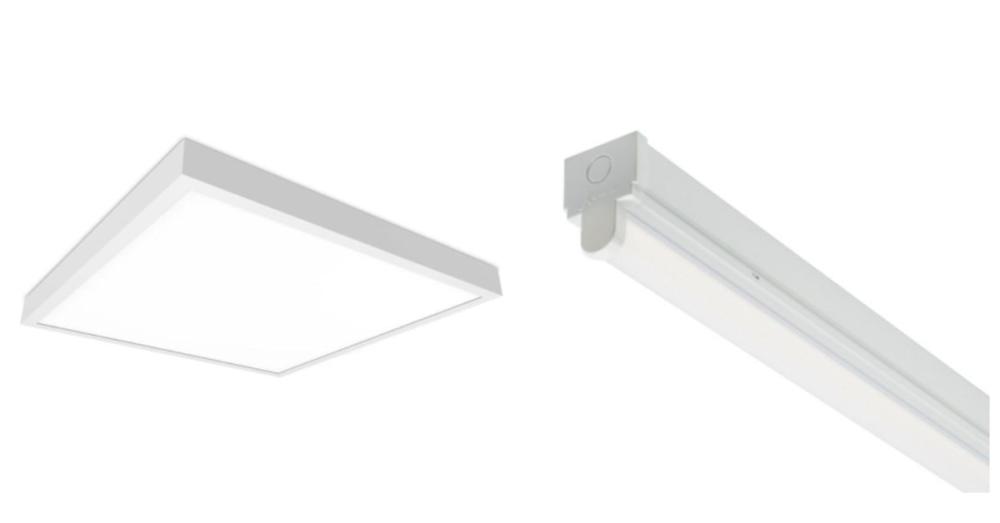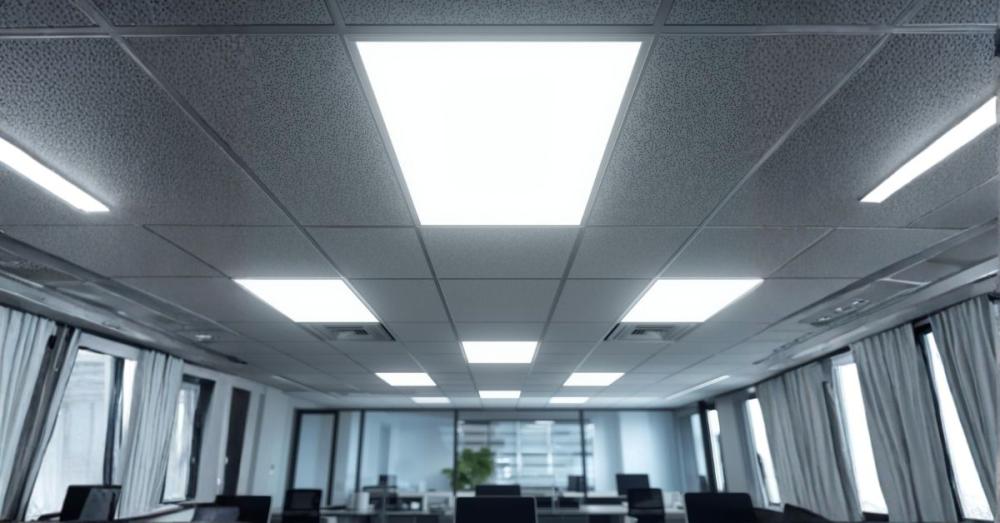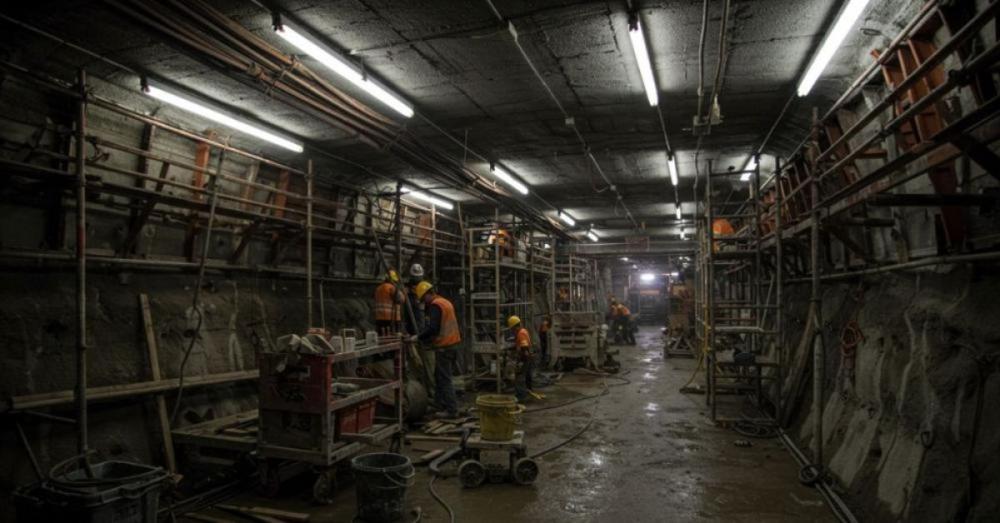LED Panel vs LED Batten: Which Is Better for Commercial Lighting
LED Panel vs LED Batten: Which Is Better for Commercial Lighting
When businesses plan a commercial lighting upgrade, the choice usually comes down to two highly popular choices: LED panels and LED battens. Both promise lower energy bills, less maintenance and better visual comfort than old fluorescent fittings, but they behave differently in real spaces.
Studies suggest that commercial LED lighting systems can be up to about 80% more efficient than conventional setups which makes picking the right LED ceiling lights a high‑impact decision for your running costs and carbon footprint. As you weigh up LED panels against LED battens, this guide will walk you through how each performs, where they work best and how to choose with confidence.
What Are LED Panels and LED Battens?
What are LED panels?

LED panels are flat, slim fixtures that sit flush in grid or false ceilings to create an even sheet of light rather than visible points of brightness. They are a popular style of LED panel lights in offices, clinics and retail because the wide diffuser helps reduce glare on screens and glossy surfaces while keeping the space looking clean and modern.
Typical LED panels come in square and rectangular formats, often delivering 90 to 120 lumens per watt which is far more efficient than many fluorescent modular fittings they replace. This makes them ideal when you want energy‑efficient LED lighting that is both visually comfortable and smart on running costs.
Source - ToolboxDIY
What are LED battens?

LED battens are linear, surface‑mounted fittings designed as a direct upgrade for old fluorescent tubes and batten housings. Instead of a tube and separate gear tray, you get a sealed, slimline body with integrated LEDs and a diffuser that spreads light across a wide area.
They are perfect where you need long runs of light in corridors, warehouses, workshops and classrooms especially when ceilings are high or services are exposed. High quality LED batten lights often deliver around 110 to 130 lumens per watt, and some specialist models reach around 140 lm/W, giving you powerful illumination with impressively low power draw.
LED Panels vs LED Battens: Feature‑by‑Feature Comparison

1. Light Quality and Visual Comfort
LED panels spread light very evenly, which helps reduce hard shadows and hotspots and creates a soft, low‑glare environment that staff and visitors tend to find more comfortable over long periods. This makes LED panels a strong choice for screen‑heavy offices, reception areas and retail floors where first impressions matter.
LED battens produce a more directional, linear beam that works brilliantly along aisles, production lines and loading bays where the priority is putting light exactly where people walk, work or store stock. You can also stagger or angle LED battens to boost task lighting over benches, racking or machinery without flooding the whole space.
2. Ceiling Compatibility and Aesthetics
Because LED panels are designed for lay‑in grid and suspended ceilings, they integrate almost invisibly, giving you a sleek, modern finish and a very tidy ceiling line. They also pair nicely with contemporary interior design where you want the lighting to disappear into the architecture.
LED battens, by contrast, shine in exposed or semi‑exposed ceilings where you need flexible mounting directly to concrete, trunking or cable tray. They suit industrial and back‑of‑house areas where practicality outweighs minimalism, while still delivering a neat, professional look.
3. Energy Efficiency and Performance
Both LED panels and LED battens are dramatically more efficient than fluorescent systems, with several studies reporting LED upgrades cutting lighting energy use by around 40 to 70% depending on the building and control strategy. One university study found LED products for linear recessed systems to be up to about 44% more efficient than comparable fluorescent tubes, highlighting just how much you can save by switching your core commercial lighting to LEDs.
In raw efficacy terms, well‑specified LED battens often edge ahead, especially in warehouse and industrial models that break the 120 lm/W mark and beyond. High performance LED ceiling lights in panel form are not far behind, and can still reduce energy use by up to around 75% compared with many traditional fittings, particularly when combined with controls.
4. Installation, Maintenance and Lifespan
LED panels are usually recessed into a grid ceiling or suspended on wires, so installation is very clean if the ceiling grid already exists, but can require more preparatory work in spaces that currently use surface battens or bare lamps. Maintenance is low once installed, as many commercial LED panel lights quote lifespans of 50,000 hours or more, significantly reducing relamping routines.
LED battens are typically faster to surface mount on existing points, making them excellent for retrofit projects where you want minimal disruption to trading or operations. Quality LED battens also offer long lifespans, and the simple, accessible housing can make driver or fitting replacement straightforward if required later on.
5. Cost and Total Cost of Ownership
Upfront, LED battens often come out cheaper per fitting than LED panels, especially where you are replacing long runs of fluorescent tubes in functional spaces. You also save on labour when you can reuse existing wiring and mounting positions.
LED panels can have a higher initial cost, particularly if you choose modular LED panels with advanced controls, but they pay back over time through energy savings, low maintenance and a premium appearance that supports your brand.
For many organisations, the long-term total cost of ownership of either option is significantly lower than sticking with fluorescent, so the real question becomes where each format adds the most value in your building.
Which Is Better for Your Commercial Space?
When to Choose LED Panels

Choose LED panels when you want:
- Comfortable, uniform light for offices, classrooms, clinics and customer‑facing spaces
- A discreet, modern ceiling with minimal visual clutter
- Easy integration of dimming or smart controls for energy‑efficient LED lighting across large open areas
Modular LED panels are worth a look if your layout is likely to change, for example in co‑working spaces, flexible office floors or evolving retail formats. They make it easier to rezone and reconfigure lighting without a full rip‑out.
When to Choose LED Battens

LED batten lights really shine when used in:
- Warehouses, factories and workshops
- Long corridors, car parks and plant rooms
- High bay or mid bay installations where linear optics reduce wasted light on unused areas
In these settings, the robust housing, strong lumen output and high lm/W performance of LED battens help you keep energy bills under control while still achieving recommended light levels for safe and efficient work.
Conclusion: Choose the Right LED Fixture for Your Next Installation
For visually driven spaces like offices, healthcare and retail, LED panels remain the go‑to choice, with modular LED panels adding extra flexibility where layouts change frequently. For tougher, more functional environments, LED battens are hard to beat, delivering bright, efficient and reliable light exactly where you need it.
To get the best from your next commercial lighting project, match the fixture style to your ceiling type, layout and light level targets, then focus on proven, energy‑efficient LED lighting from trusted brands. Meteor Electrical provides a curated selection of LED panels and LED battens, with fast online delivery across the UK, so you can upgrade with confidence and minimal downtime.
FAQs
1. Are LED panels more energy efficient than LED battens?
Both can be very efficient compared with fluorescent lighting, with many commercial LEDs using far less power for the same brightness. In reality efficiency depends more on the specific model you pick than on whether it is a panel or a batten.
2. Can LED panels replace existing tube lights or battens?
Yes, LED panels can replace old modular fluorescent fittings in grid ceilings, and surface frames let you use them where there is no existing grid. If you already have surface battens on conduit or trunking, swapping to new LED battens is often the quicker and cheaper route.
3. Are modular LED panels worth it for small offices or shops?
Modular LED panels really pay off where layouts change a lot or you want flexible, zoned control over your lighting. For a small, fairly fixed space, standard LED panels or LED battens will usually give you everything you need at a lower upfront cost.
4. How long do LED panels and LED batten lights last?
Many commercial LED ceiling lights, including panels and battens, are rated for around 50,000 hours or more, far longer than typical fluorescent tubes. In a normal business, that often means years of use before you even have to think about replacements.
5. Can I dim LED panels and LED battens?
Yes, plenty of LED panels and LED battens come with dimmable drivers, and some work with smart sensors for extra energy savings. Just make sure the fittings, drivers and controls are compatible, or ask a specialist such as Meteor Electrical to match them for you.

